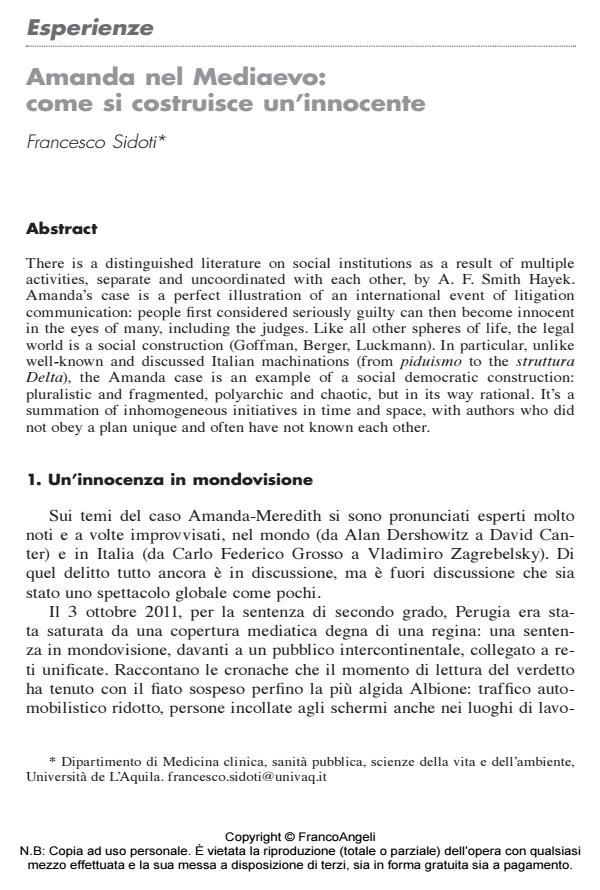Amanda nel Mediaevo: come si costruisce un’innocente
Journal title SICUREZZA E SCIENZE SOCIALI
Author/s Francesco Sidoti
Publishing Year 2013 Issue 2013/2
Language Italian Pages 13 P. 107-119 File size 259 KB
DOI 10.3280/SISS2013-002008
DOI is like a bar code for intellectual property: to have more infomation
click here
Below, you can see the article first page
If you want to buy this article in PDF format, you can do it, following the instructions to buy download credits

FrancoAngeli is member of Publishers International Linking Association, Inc (PILA), a not-for-profit association which run the CrossRef service enabling links to and from online scholarly content.
There is a distinguished literature on social institutions as a result of multiple activities, separate and uncoordinated with each other, by A. F. Smith Hayek. Amanda’s case is a perfect illustration of an international event of litigation communication: people first considered seriously guilty can then become innocent in the eyes of many, including the judges. Like all other spheres of life, the legal world is a social construction (Goffman, Berger, Luckmann). In particular, unlike well-known and discussed Italian machinations (from piduismo to the struttura Delta), the Amanda case is an example of a social democratic construction: pluralistic and fragmented, polyarchic and chaotic, but in its way rational. It’s a summation of inhomogeneous initiatives in time and space, with authors who did not obey a plan unique and often have not known each other.
Francesco Sidoti, Amanda nel Mediaevo: come si costruisce un’innocente in "SICUREZZA E SCIENZE SOCIALI" 2/2013, pp 107-119, DOI: 10.3280/SISS2013-002008